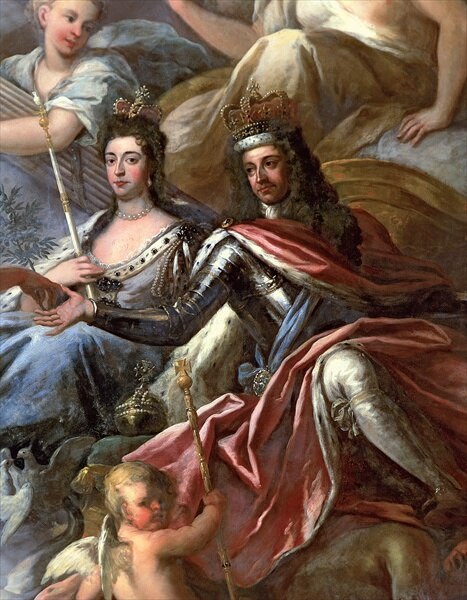A number of peace symbols have been used many ways in various cultures and contexts. The dove and olive branch was used symbolically by early Christians and then eventually became a secular peace symbol, popularized by a Dove lithograph by Pablo Picasso after World War II. In the 1950s the "peace sign", as it is known today, was designed by Gerald Holtom as the logo for the British Campaign for Nuclear Disarmament (CND), a group at the forefront of the peace movement in the UK, and adopted by anti-war and counterculture activists in the US and elsewhere. The symbol is a superposition of the semaphore signals for the letters "N" and "D", taken to stand for "nuclear disarmament", while simultaneously acting as a reference to Goya's The Third of May 1808 (1814).
An engraving from The London Magazine, January 1775, showing the Goddess of Peace bringing an olive branch to America and Britannia.
James Thornhill, Peace and Liberty Triumphing Over Tyranny
Wall painting from the early Christian Catacombs of Marcellinus and Peter in Rome, showing Noah, in the orante attitude of prayer, the dove and an olive branch
The descent of Holy Spirit in the Christian Trinity depicted as a dove of peace in a church memorial stained glass window.
Doves, typically domestic pigeons white in plumage, are used in many settings as symbols of peace, freedom, or love. Doves appear in the symbolism of Judaism, Christianity, Islam and paganism, and of both military and pacifist groups.
White doves at the Blue Mosque, Mazar-i-Sharif
Early fifth-century BC statue of Aphrodite from Cyprus, showing her wearing a cylinder crown and holding a dove
J. E. Millais: The Return of the Dove to the Ark (1851)
Dove with an olive branch, Catacombs of Domitilla, Rome








